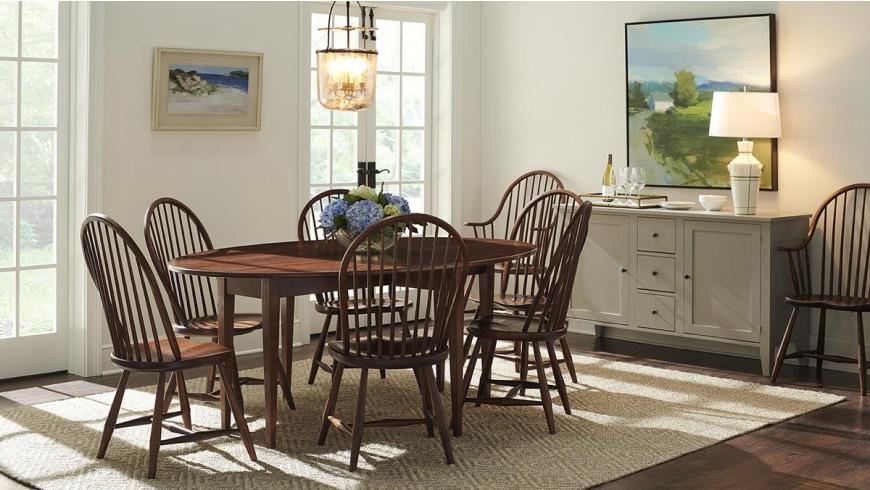Choosing The Right Dining Table For You And Your Home

It’s fine to scroll through our dining tables like you’re on a dating app, “oohing” here, “ahhing” there, tagging those that quicken your pulse. But if you’re going to settle down with one, it’s a good idea to ask some serious questions first. Because like the right mate, your Gat Creek dining table will play a major role in your life and be around for a long time.
For some, that relationship will be formal; the table will have a room of its own, dedicated to hosting meals and only meals. For most of us, though, the dining table is much more, and often central to the home’s activities.
“People are looking at their homes differently now. The dedicated dining room is changing,” said Maggie Aardema, Principal Interior Designer for Design Associates in Wilmington, NC. “Will it also be a library, where kids do their homework? Will it serve as a home office because now you need two? The dining table in most homes has to handle more than one purpose.”
That need for versatility puts a high premium on build quality; your table needs to hold up. Maggie recommends paying attention to what you can’t see as much as what you can. “Look underneath the table, how the base or the legs connect. Examine the joinery,” she said.
Lots of hardware and screws joining pieces together is not a good sign for longevity as those joints tend to wear out faster, break easier and cannot be repaired.
Repairability also favors solid wood construction. Dings and scratches that permanently mar veneered tables add character to solid wood tables. And, when it’s time, a solid wood table can be be sanded, refinished and returned to showroom condition.
Three more key aspects merit deep consideration before you commit to a dining table: size, shape and base.
Fixed Top or Extension: In addition to the number of people you want to accommodate (allowing 22”-24” per place setting), the area where the table will live should guide the size you choose. Experts say at least three feet of walking space around the perimeter is the ideal. Need more versatility than a fixed top table? Extension tables are just the ticket, extending to accommodate unexpected guests.
Square or Round: It’s all about the room when you’re deciding between a traditional square/rectangular table or round/oval. Instinct may say put a rectangular table in a rectangular room. But round or oval can make the most of a tight space (and leaves can come to the rescue when more guests show up). Ovals also orient guests to encourage more conversation. “I have an oval drop leaf similar to this gorgeous one from Gat Creek,” Maggie said. “Size without sharp corners. I think it’s perfect. But you must also consider the base.”
Legs or Pedestal: The base greatly affects how many a table can seat, and their comfort. We’ve all been to dinners where we got stuck on the corner, dealing with the table leg. For the most versatility, opt for a pedestal or trestle base. These two options will accommodate the most diners and be kinder to knees and legs.
One final consideration: favor timeless over trendy. “Choose a style that has longevity,” Maggie said. “With a classic dining table you can always update by changing the chairs that surround it.” No matter the space you’re working with, there’s a dining table match made in (almost) heaven, West Virginia.
